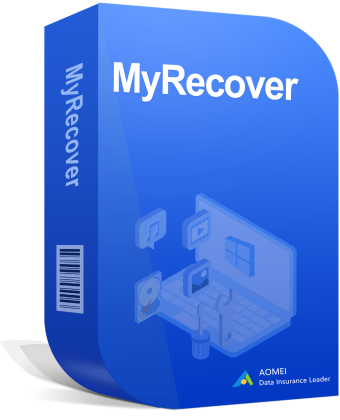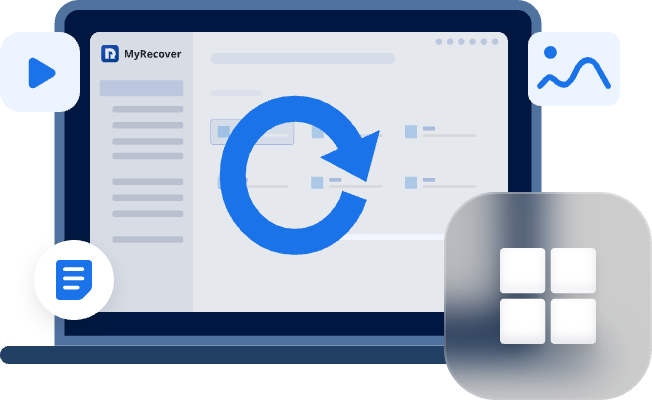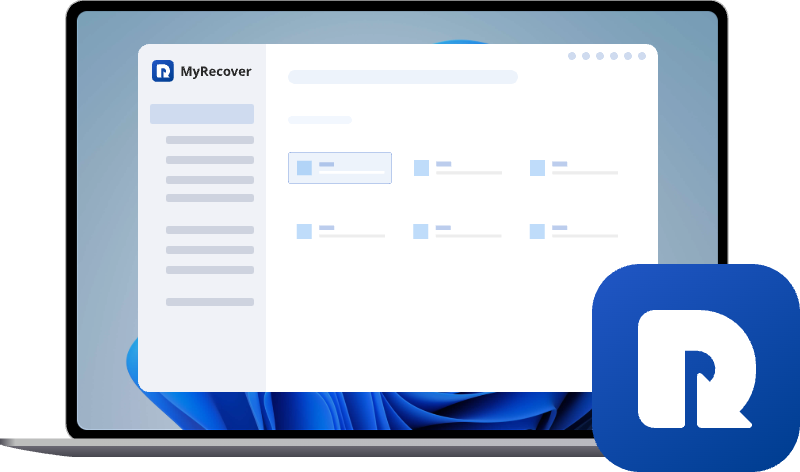Solve Windows File Recovery Error 0x80070356 & Recover Files Now
Struggling with the windows file recovery error 0x80070356? This article details how to resolve the failed to create destination folder error 0x80070356 unknown error 0x80070356. Our proven methods address folder permissions, path length, and drive formatting to help you bypass this block and recover your lost data.
Windows File Recovery Error
Sometimes, you might need Windows File Recovery to recover your deleted files. However, it shows some errors like:
- Failed to create destination folder, Error 0x80070356: Unknown error 0x80070356
- There was an error parsing your command. Please check /? for more information and try again.
- ...
Don’t worry, you are in the right place if you are suffering from the Windows File Recovery Error 0x80070356 message. You will find the effective, proven solutions to fix and recover your files easily and quickly. Let’s get started.
What Triggers the Failed to Create Destination Folder Error
So, what's actually going on when this error pops up? In essence, the Windows File Recovery tool (WinFR) has successfully found your lost data but has stumbled at the final hurdle: saving it. The "destination folder" is where you've told WinFR to place the recovered files, and for one of several reasons, the tool doesn't have the green light to write data there. Let's break down the usual suspects causing this logistical nightmare.
- Insufficient Permissions on the Target Drive
This is the most frequent cause. Even administrator accounts often lack explicit write permissions for certain folders. The WinFR tool simply isn't authorized to create files in your specified location, triggering the access denial error.
- Destination Path Exceeds Character Limit
Windows has a 260-character path limit. When combined with deep folder structures and WinFR's attempt to recreate original paths, this limit gets exceeded. The result is a failed creation attempt and the associated error message.
- File System or Drive Format Incompatibility
WinFR primarily works with NTFS file systems. Using drives formatted with FAT32 or exFAT—especially as destination drives—creates compatibility issues. The tool requires NTFS features to function properly, and incompatible formats will cause the recovery to fail.
6 Solutions to Windows File Recovery Failed to Create Destination Folder
Now, it’s time to fix the Windows File Recovery error 0x80070356. Try the following solutions.
Way 1. Verify the Destination Drive is Accessible
This seems obvious, but it's worth checking. Open File Explorer and navigate to the drive you specified as the destination. Can you create a new text file or folder there manually? If not, the drive might be read-only, disconnected, or experiencing a hardware fault. Fix it and then try again.
If you're using an external USB drive, try a different port or cable. A flaky connection can easily cause this entire problem.
Way 2. Ensure Enough Available Space on the Target Drive
Data recovery isn't a small task. You need enough free space on the destination drive to hold all the recovered files. A good rule of thumb is to ensure you have at least 10-15% more free space than the capacity of the drive you are recovering from.
If you're trying to recover a 500GB drive, your destination should have at least 550GB free. Running out of space mid-recovery is a surefire way to trigger an error.
Way 3. Confirm Correct WinFR Command Syntax
The Windows File Recovery tool is a command-line utility, which means it's not very forgiving of typos. A single misplaced slash or an incorrect switch can throw the whole operation off.
Double-check your command for accuracy. Ensure you have the source and destination drives correct (e.g., C: to D:), that you're using the appropriate mode (/regular or /extensive), and that your file filters are correctly applied. A second pair of eyes can be helpful here.
Way 4. Taking Ownership of the Destination Folder
If you don’t have enough permissions to the destination folder, WinFR failed to create the destination folder. So, the first thing is to forcefully grant your user account full and explicit control over the destination folder.
By taking ownership, you declare yourself the ultimate authority over that folder and everything inside it. To do this:
1. Right-click the destination folder you plan to use, select 'Properties', and navigate to the 'Security' tab.
2. Click the 'Advanced' button. At the top, you'll see the current owner.
3. Click 'Change' next to it, type your username into the box, and click 'Check Names' to verify. Once your username is resolved, click 'OK'.
4. Now, this is the crucial part: check the box that says, 'Replace owner on subcontainers and objects'. Click 'Apply' and 'OK'.
5. Back in the 'Security' tab of the folder's properties, click 'Edit' to change permissions. Click 'Add', type your username again, and click 'OK'.
6. In the group or usernames list, select your account. In the permissions box below, tick 'Full control'. This will automatically check all the boxes below it.
7. Click 'Apply' and 'OK'.
8. Search for 'Command Prompt' or 'Windows Terminal' in the Start Menu.
9. Right-click it, and select 'Run as administrator'.
10. Then run Windows File Recovery commands to recover your files, and the Windows file recovery error 0x80070356 should be fixed.
Way 5. Using a Different Drive or Shorter File Path
The simplest advanced fix is to change your destination entirely. Instead of saving to a deeply nested folder like D:\Backups\OldFiles\RecoveryAttempt\2024, try using the root of a drive, like D:\Recovery. This instantly eliminates any potential path length issues.
If possible, use a completely different physical drive. This isolates the problem, helping you determine if the issue is with the original destination drive itself.
Way 6. Checking for File System Errors with CHKDSK
The destination drive might have underlying file system corruption that's interfering with the recovery process. You can check for and repair this by running the Check Disk utility(CHKDSK).
1. Open an Administrator Command Prompt and type chkdsk g: /f /r (replace X with the letter of your destination drive).
2. Press 'Y' to schedule the scan for the next restart, then restart your computer.
This utility will scan and repair errors on the drive, potentially clearing the path for a successful recovery.
Fast Recover Files with MyRecover Instead of Windows File Recovery
When you're tired of battling command-line syntax and cryptic permission errors, MyRecover emerges as a powerful and intuitive knight in shining armor. This software is designed to handle the technical heavy lifting for you, offering a graphical interface that guides you through the recovery process with ease, completely bypassing the issues that cause the Windows File Recovery error 0x80070356.
Why MyRecover Stands Out?
- Easy to Use. MyRecover operates differently from the command-line-based WinFR. It doesn't require you to specify a complex destination path using commands.
- Fast Recover. It integrates seamlessly with the Windows environment, automatically handling permissions and file system nuances in the background.
- Preview and Selective Recovery. It offers powerful data preview capabilities, allowing you to selectively recover files, which can save you a tremendous amount of time and disk space compared to a full, blind recovery.
- Supports All Windows Operating Systems. You can run it on Windows 11/10/8.1/8/7/Vista/XP, and Server 2025/2022/2019/2016/2012/2008.
How to bypass Windows File Recovery Error 0x80070356 and recover files easily with MyRecover? Check this (Assuming that your files are deleted):
1. Install MyRecover after downloading it, then run it.
2. Tap Deleted Files Recovery, choose the drive to scan.
3. Hit OK once the scanning finished.
4. Preview and select the files and folders, and hit Recover.
5. Choose a destination folder, and hit Select Folder to save these recovered files.
- Tips:✎...
- By default, it scans files using the quick scan while recovering deleted files. If there are no files that you are looking for, try the deep scan.
- You can choose any folder on any drive with sufficient space. It automatically creates the destination folder, which bypasses the failed to create destination folder error 0x80070356.
- Ensure you are not saving the files back to the same drive where they were lost.
- Before recovery, you can find files by file type, file name, file path, and file size. Feel free to recover your precious files.

- Recover Deleted Files Easily with Simple Clicks
- 1000+ File Formats Supported
- Support HDD, SSD, External Hard Drive, USB Drive, SD Card, etc.
- Quickly Find Files Using File Types, Name, Size, etc.
- Preview Files Before Recovering
- Recover Unlimited Data
Besides, if you need to recover files from unlimited computers, MyRecover Technician is your best choice.
FAQs about Windows File Recovery Error 0x80070356
What does "failed to create destination folder error 0x80070356" mean in simple terms?
A: It means Windows File Recovery found your lost files, but couldn't save them due to a permissions issue. The tool is being blocked from writing to your chosen destination folder.
How can I fix the WinFR "unknown error 0x80070356" for good?
A: Start by taking ownership of the destination folder and granting yourself Full Control permissions. If that fails, use a simpler folder path (like D:\Recovery) and ensure your drive is formatted as NTFS. For persistent errors, switch to recovery software like MyRecover.
I've fixed permissions, but I still get "winfr failed to create destination folder." What now?
A: Double-check that you're running Command Prompt as Administrator. Verify there are no typos in your recovery command. Test if you can manually create folders on the destination drive. If not, try using a different drive entirely.
Is there a way to prevent the Windows File Recovery error 0x80070356 from happening?
A: Always run Windows File Recovery as Administrator. Use simple destination paths (preferably a drive's root folder like E:) and ensure your destination drive is formatted as NTFS before starting any recovery.
Can MyRecover really bypass the "Failed to create destination folder" error completely?
A: Yes. MyRecover handles file creation through its own system, automatically managing permissions and path limitations that typically cause the Windows File Recovery tool to fail.
My destination drive has plenty of space and is NTFS. Why the error?
A: The issue isn't space but permissions or system glitches. Check that permission inheritance is enabled in the folder's security settings. Also, temporarily disable your antivirus software, as it can sometimes lock folders during recovery attempts.
Write in the End
Now, Windows File Recovery Error 0x80070356: Failed to create destination folder, error 0x80070356 should have been fixed. If you need to recover files, MyRecover is another great choice if Windows File Recovery is not working.
Besides, MyRecover can recover files from an unformatted partition, an unbootable computer, etc.


